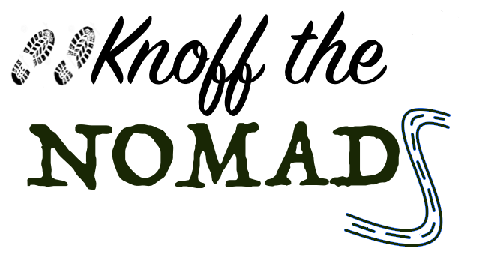One thing I knew for sure when we were planning this trip was that I loved Siena, Italy, and wanted to be there for Il Palio. What I didn’t know was really anything about the Palio, the culture of the city, or what to expect. That’s why decided to devote an entire month of our Schengen and travel time to the city of Siena, with the grand finale of the Palio.

Contents
Just a Little Background
Now for a (very) brief introduction to the Palio. Siena is home to a centuries old bareback horse race, which is run twice every year (and sometimes a third time on special occations). The modern dates are July 2nd and August 16th. The race is run in Il Campo, the large shell shaped square in the heart of the city.
In each race you have 10 horses, representing 10 of the 17 contrade, or neighborhoods in the city. To be a member of a contrada, you must have been born there or born to parents who are contradaioli (contrada members). For Sienese, contrada is family, and they take it very seriously. The 7 contrade that did not race the year before in the July race are guaranteed a spot in the current July race, and 3 additional contrade will be selected using lottery spots. The same happens in August. Jockeys ride bareback, wearing the colors of the contrada they represent, and the stakes of pride, bragging rights, and political victory are extremely high.
If you are interested, or are planning to be in Siena for the Palio, please read some of the articles I will list at the end or watch the very interesting Netflix documentary, Palio, which dives into the behind the scenes money and influence that shape the race.
My goal here is not to try to explain the race. I want to give some practical advice to those of you planning to attend.
The Leadup
As the time of the Palio approaches, the vibe in the city starts to change. You can tell something exciting is coming. One morning, about a week before the race, we were woken up around 7am to the drumbeat of our local Valdimontone youth drummers (Valdimontone is the contrada we stayed in. Their mascot is the Ram). They were marching through the streets with their flags and drums, wearing traditional tights and cloaks. From that point forward, the events just became more and more intense. Daily we would see groups from the contrade marching through the city drumming, singing their songs, and sometimes antagonizing their rivals. There are neighborhood dinners, to raise money to support the race, and the cathedrals and museums of the contrada open to the public.

#1 Get to the city at least a few days before the race to experience the excitement
#2 See if you can find one of the neighborhood dinners happening in the weeks before the race and attend. Nothing helps you understand the race like getting to know the people. (NOTE: These are different than the dinners that happen the night before the Palio and the night of the Palio in the winning contrada. Those are generally reserved for the members of the contrada).
The Trials
Beginning on June 29th (and then again on Aug 13th) the official Palio events begin. On the first morning all of the potential horses and jockeys get the chance to run and from the 35 or so that are presented, 10 will be chosen by the contrada captains to participate in Il Palio.
What follows are 6 trial runs where the horses and jockeys get the chance to get used to the arena and prepare for the race.
#3: For us, the trials were a chance to try out different locations in the square and decide where we wanted to stand for the race. If you don’t have tickets for seats, and plan to watch from the free area in the center of the square, this might be a good idea. It’s also the chance to get some good photos since the day of the race is insane.
Race Day

The day of the Palio actually starts out pretty quietly. There is a final trial run in the morning, but it is usually uneventful. By noon, some hearty people will begin entering the square to get the best spots. If you arrive after 4:30 you’ll need to go in the entrance from the Onda neighborhood. Just watch where the crowds are going and you should find your way there. The race was actually scheduled to start at 7:20 but the pomp and circumstance began well before. It was pretty cool to see the presentation of large hand painted banner, also called Il Palio, which the winning contrada keeps in their museum. It is brought in on a cart drawn by large white oxen. Below are my final pieces of advice for race day. Most of this will be helpful if you are watching from the center of Il Campo.
#4: Bring a towel or something to sit on because you will be there for a long time.
#5: Don’t drink too much beforehand because you’re not going out to use the bathroom.
#6: If you bring water, only bring it in a plastic bottle. And, it seems in recent years they’ve been taking away bottles lids at the entrance, so that people don’t use the full bottle as a weapon against the losing/rival jockeys. Just be ready for it. We had these giant bottles of water completely full and had to carefully hold them the whole time because we had no lid and couldn’t dump them because people were sitting all around us.
#7: I really recommend watching the Netflix Documentary, Palio, because they explain so much about what is happening at the beginning of the race and throughout that really makes it much more interesting to watch.
#8: Be aware if you are in the top left corner (by the start) that they shoot off a cannon, early and often, during the trials and on race day. It is usually preceded by a drumroll, so you can plug your ears, but it is LOUD. If you have kids, you might not want to stand in that part of the square.
#9: As a short person, I only was able to see about 25% of the race. It’s just the way it is if you’re in the center of the square. Even tall people can’t see everything. So pick out what you want to make sure you can see, adjust your position to keep a good view of it, and know you’ll get to see many replays on tv of the 90 seconds of action that are the actual Palio race.
After the Race
As soon as Il Palio is over, people go nuts. The winning horse and jockey are mobbed. People are singing, people are crying and a whole lot of people want to get out of the square. It was actually pretty orderly, all things considered. The winning horse and jockey are taken to the contrada church and clubhouse where the neighborhood dinner and celebration will go long into the night.

#10: If you know the general location of each contrada within the city, you can make your way to the winning contrada as soon as the race is over and be there to watch the excitement when the Palio banner, horse and jockey return. Remember to be respectful of the contradaioli as they come to celebrate their victory. This is an extremely important event for them, and not done for the sake of tourists.
Would I Go Again?

Absolutely. I’m so glad we had the experience from start to finish and watched with the crowd in the square. If we were going to be back, I would probably spring the hundreds of euro to watch from above for a different experience.
Have you been to Il Palio in Siena? How was your experience. What advice do you have?
Resources:




Thanks for the excellent and thoughtful article! We’ll be in Siena for the Palio in July, and then heading up to Florence the day after the race. Do you have any thoughts about getting out of Siena the day after the race? I wonder if it’s as congested as leaving Cape Cod on a summer Saturday…
Hi John, I’m sorry for the delayed response. I don’t think you should have any issue getting out of Siena the day after the Palio. So much of the race is a community event, that there aren’t as many tourists as you may expect. Don’t get me wrong, the city will be nuts, but a lot of it is local residents.
If you are driving, you’ll be parked somewhere outside of the city walls (most likely) so it shouldn’t be too much busier than normal, and if you are taking the train (highly suggest), then I would recommend getting your tickets purchased now (about $11/person). I don’t have any feedback about getting a taxi/bus down to the train station. I’ve always walked to the escalators that are outside the city walls and taken them down to the station. Let me know if you have any questions about that!
Have an amazing time!